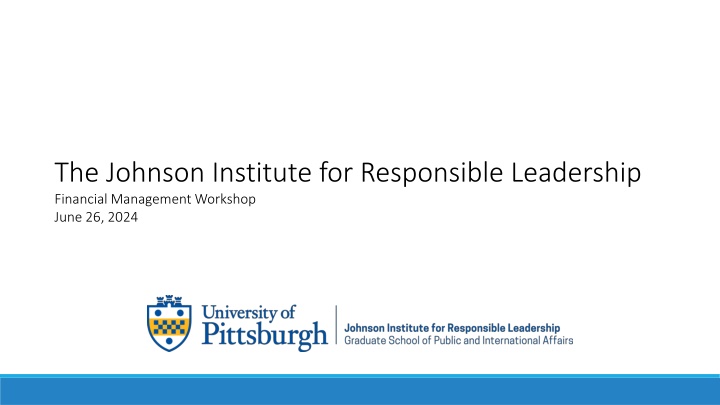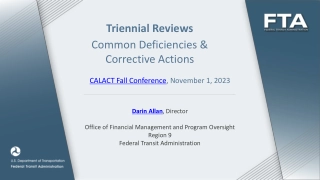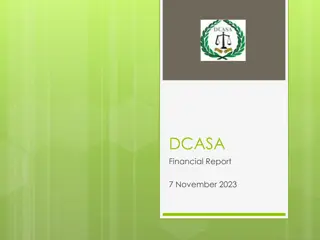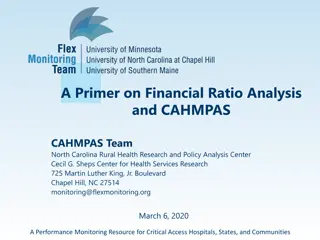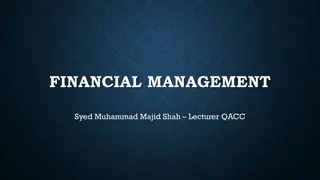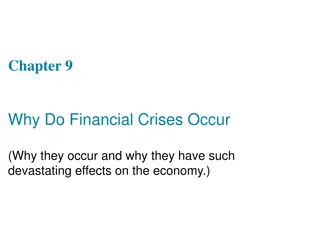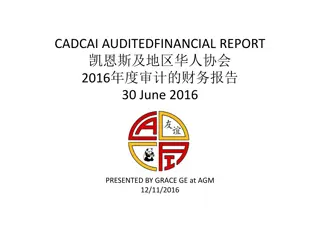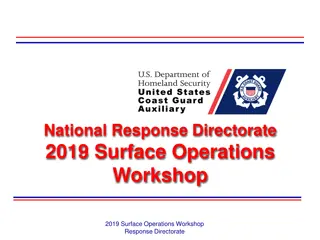Financial Management Workshop Highlights
The Johnson Institute offers workshops for nonprofit organizations on building financial capacity for sustainability. The event includes roundtable discussions, common budget mistakes, and strategies for achieving financial goals. Topics cover net assets, liquidity, balanced budgets, revenue, expenses, and building capacity through budget surpluses. Expert panelists share insights on maintaining financial health to support organizational missions effectively.
Download Presentation

Please find below an Image/Link to download the presentation.
The content on the website is provided AS IS for your information and personal use only. It may not be sold, licensed, or shared on other websites without obtaining consent from the author.If you encounter any issues during the download, it is possible that the publisher has removed the file from their server.
You are allowed to download the files provided on this website for personal or commercial use, subject to the condition that they are used lawfully. All files are the property of their respective owners.
The content on the website is provided AS IS for your information and personal use only. It may not be sold, licensed, or shared on other websites without obtaining consent from the author.
E N D
Presentation Transcript
The Johnson Institute for Responsible Leadership Financial Management Workshop June 26, 2024
Financial Management Workshop The Johnson Institute offers a series of capacity-building workshops for nonprofit organizations. Supported by the RK Mellon Foundation Moderator: Diane McMillen, CPA, MBA, GSPIA Instructor Panelists: David Blaner, Executive Director, Allegheny County Bar Association and Allegheny County Bar Foundation Dexter Hairston, Executive Director, The Kingsley Association
Agenda Concept Review Roundtable Discussion Common Budget Mistakes Reasons Why Nonprofits Fail Financially Questions are welcomed through out the session.
Building and Maintaining Financial Capacity Goal - achieve financial capacity and sustainability while delivering on the mission
Capacity and Sustainability Financial Capacity Net assets necessary to take advantage in opportunities and to respond to threats. Ex: invest in a new program or replace the air conditioning system Sustainability principle can the organization ensure consistent operations between the short run annual surpluses or deficits and the long run as measured by long term asset growth. Ex: a temporary revenue set back in one year does not require that an important program be cancelled Liquidity cash available to pay current bills or ability to raise cash quickly to pay current bills.
How to build capacity What is a balanced budget? Revenue Expenses = $0 or greater than $0 Revenue + fund balance Revenue + new borrowings (debt) Expenses Expenses = $0 or greater than $0 = $0 or greater than $0 (NOT recommended) If you have multiple programs and do not allocate all indirect costs, some program budgets need to generate net revenue in order to help offset indirect costs. A net budget surplus will build capacity.
Roundtable discussion Tips and take aways Learn from experience
Common Budget Mistakes Nonprofits Make 1. Too Few People Involved 2. Not Enough Time to Prepare, rush the process 3. Infrequent Budget Reviews 4. Incorrect Revenue Forecasts 5. Losing Track of Dollars Spent, disorganization, managers not following budget 6. Depending on Last Year s Budget without updates 7. Omitting A Reserve Fund (budget surplus, transfer into reserve) 8. Not Investing in Future Improvements 9. Not Having A Financial Expert Involved
Reasons Why Nonprofits Fail Financially 1. Leadership with limited financial experience, who have either limited interest in, or knowledge about, financial management. 2. Board members are disengaged. 3. The organization fails to do long-term planning. 4. There is a lack of diversification in revenue streams. 5. The organization is slow to respond to market changes that affect its financial strength. Resistance to change
